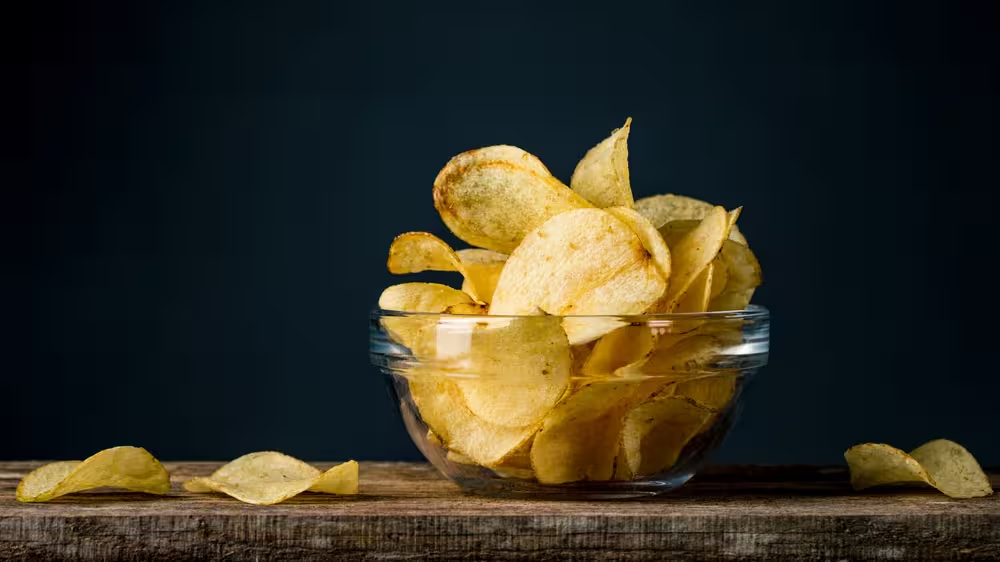In this article, I look at a major food trend 2025: comfort food. You will find statistics on the different “verticals” of this market and a psychological explanation of the fitness of this type of food.

In preparation for the SIAL international food trade show, this article looks at one of the key trends for 2024: comfort food. In troubled times like these, food is sometimes perceived as a refuge. Statistics show that comfort food is booming. According to market research, 52% of food products launched in 2023 were pleasure-related, compared with 47% in 2022.
Contact the IntoTheMinds market research agency
Statistics on the comfort food market (2023/2022)
- 75% of consumers expect pleasure from their food consumption (+5 points compared to 2022)
- +15%: increase in cookie sales in Europe between 2023 and 2022
- +14%: increase in sales of potato chips in Europe between 2023 and 2022
- +10%: increase in sales of snacks in Europe between 2023 and 2022
- +25%: increase in sales of potato chips in France between 2023 and 2022
- +16%: increase in sales of sweets and lollipops in France between 2023 and 2022
- +15%: increase in sales of spreads in France between 2023 and 2022
- +14%: increase in cookie sales in France between 2023 and 2022
How consumers approach food tends to evolve in a global context marked by economic and geopolitical crises. In 2023, we saw the rise of foods that bring a sense of reassurance and pleasure. This is what is commonly known as “comfort food.”
The comfort food market is doing well
Despite a general decline in volumes in other food categories, products associated with pleasure, such as ice cream, chocolate, cookies, and snacks, are proving highly resilient (compared, for example, to the organic debacle). Here are a few statistics illustrating the growth in sales of these products in Europe and France: +25% for potato chips, +15% for cookies, +14% for cookies, and +10% for chocolate. This contrasts sharply with other segments, which have seen significant declines.
This phenomenon is intricately linked to food inflation, pushing consumers to rationalize their purchases while preserving the small pleasures of everyday life (remember that retailers have also rationalized their offers). Almost 43% of Europeans say that, since they no longer go out to eat as often, they prefer memorable culinary experiences at home. Aware of this trend, brands and retailers continue to innovate to meet these expectations, offering more sophisticated comfort food products that combine quality, texture, and flavor.
To get to the heart of the matter, we need only look at the market for spreads, a comfort food product par excellence.

The chocolate spread market is booming
By 2022, the chocolate spread market was already enjoying rapid growth. In France, sales reached 609 million euros, up 7.6%.
Nutella is the undisputed leader in this segment, with a 66.5% market share by value and 62.1% by volume. Given the size of this market and its monopoly, competitors are extremely aggressive in their efforts to win back a few percentage points.
Challenging brands such as Rigoni di Asiago (Nocciolata) are growing faster (+10.5%). On the French market, its market share in 2023 was 7%. Its strategy is based on higher-quality ingredients and ethical values. The absence of palm oil is at the heart of the marketing strategy, and Nutella’s advertising in 2024 tries to counter this by emphasizing “renewable” ingredients.
On the French market, Bonne Maman has made a strong entry into the sector, gaining market share points since 2021. In 2023, it had a market share of 3.1%, up 2.6%. Given Bonne Maman’s past as a confectioner, it is fair to ask why it didn’t enter this niche earlier. The fact remains, however, that Bonne Maman’s recipes, rich in hazelnuts and “made in France,” are now appealing to consumers.
The resurgence of comfort food reflects a need for emotional compensation in times of uncertainty.
Why the socio-economic context favors comfort food
The resurgence of comfort food reflects a need for emotional compensation in times of uncertainty. These products become accessible and essential vectors of pleasure, particularly for modest households, where they often represent one of the few accessible daily luxuries. Beyond mere consumption, comfort food is establishing itself as a barometer of consumers’ emotional expectations, a key indicator for the agri-food industries in defining their future strategies.
Market research during the COVID-19 crisis highlighted the correlation between stress and the need for pleasure in food. Market Research in Brazil highlighted the causal links between emotional stress and comfort food consumption. Not all comfort foods are created equal. The podium is made up of fast food (0.67), followed by fried foods (0.62) and snacks (0.60).

Conceptual model showing the correlations measured between the 3 main constructs: perception of the COVID-19 crisis, emotional response, and consumption of “comfort food” (after Salazar-Fernández et al. 2021). As you can read on the right-hand side of the image, “comfort food” consumption is mainly oriented towards fast food and fried foods (chips, …) and snacks
Conclusion
Comfort food has been on the rise since 2022 and is set to become a major trend in 2025. It is establishing itself as a central pillar of contemporary eating for 2 reasons:
- it offers moments of comfort
- it provides flexibility
Ultimately, products in this segment are adapting to consumers’ new choices.
Posted in Marketing.

